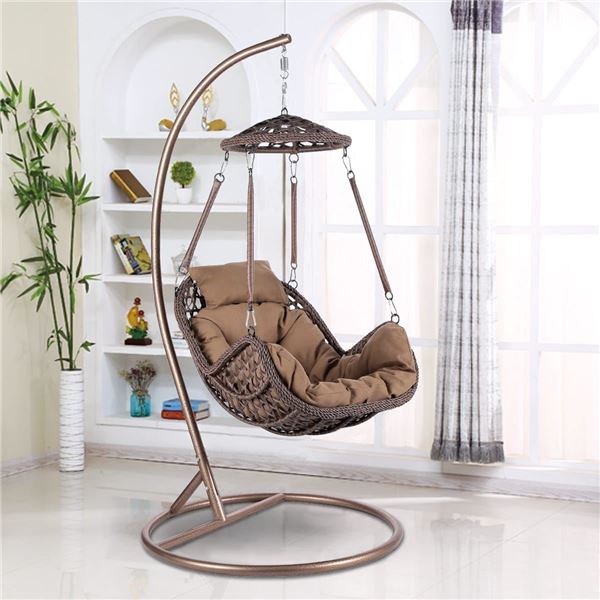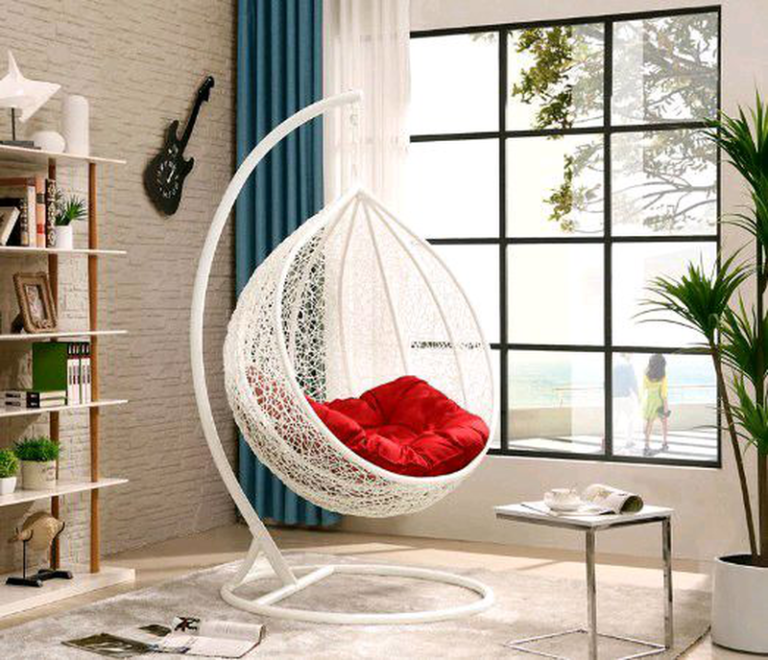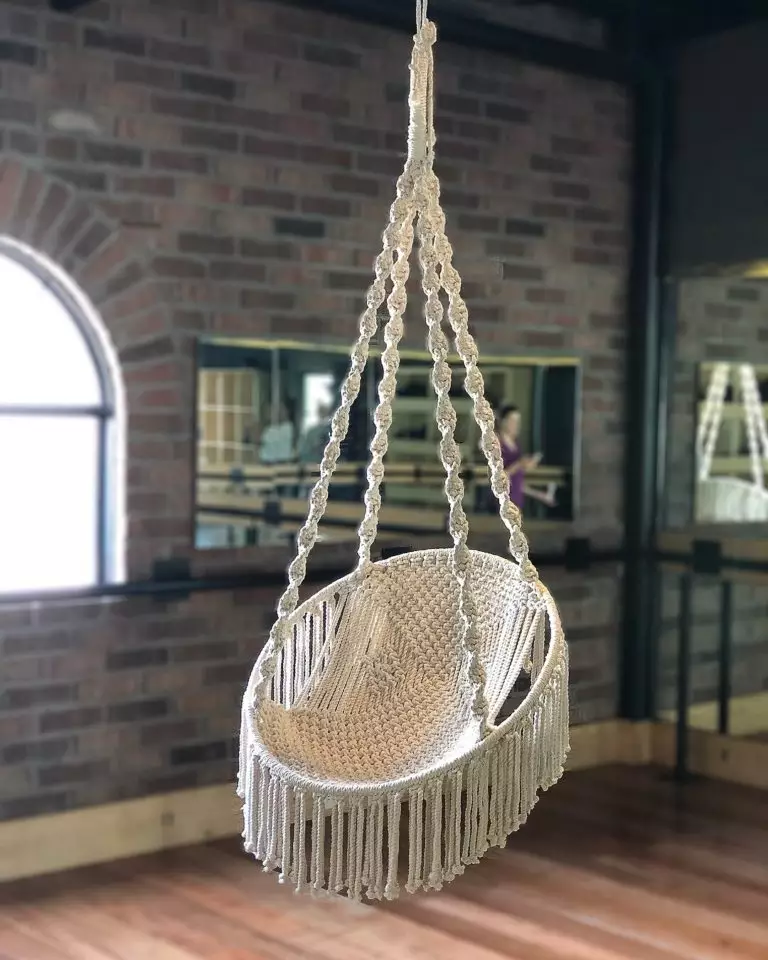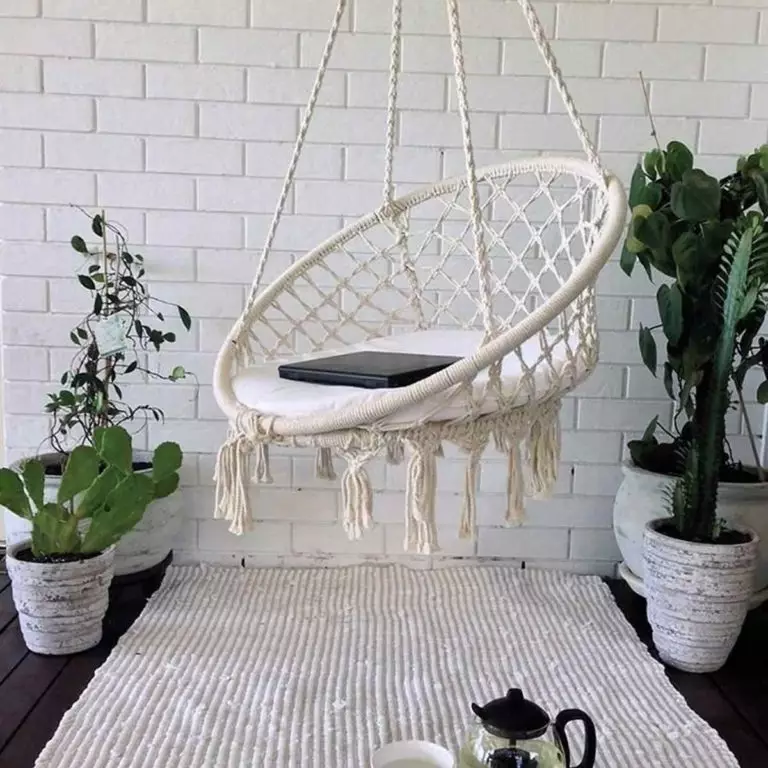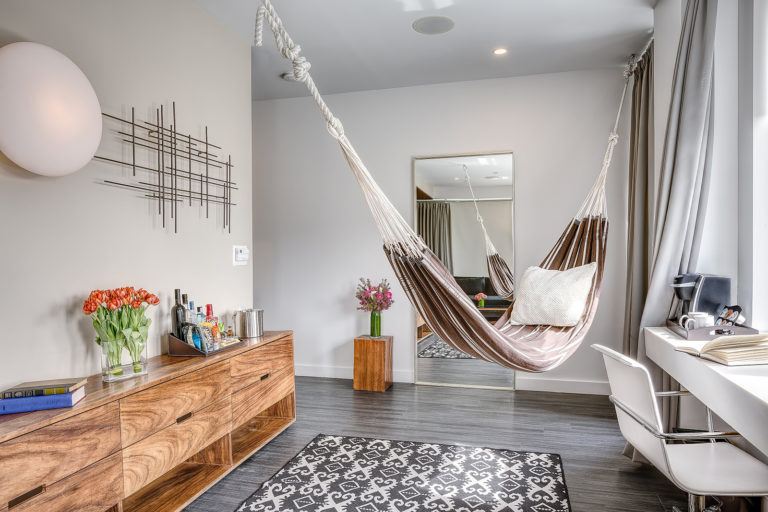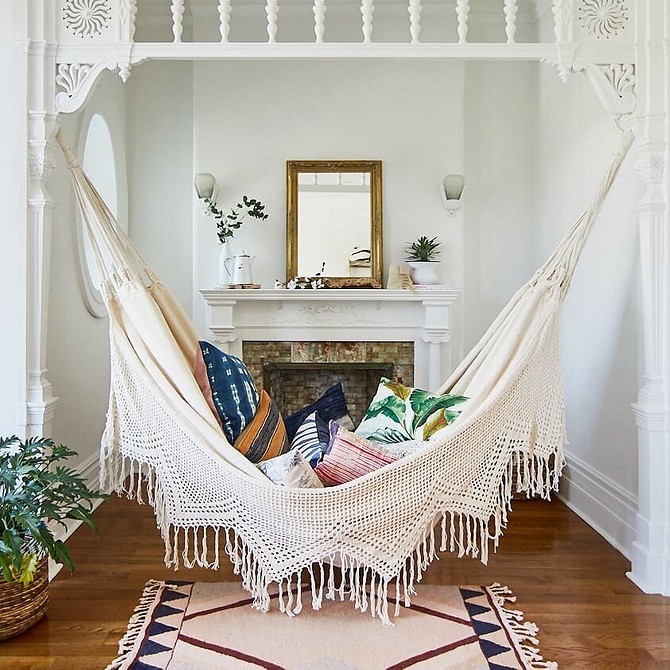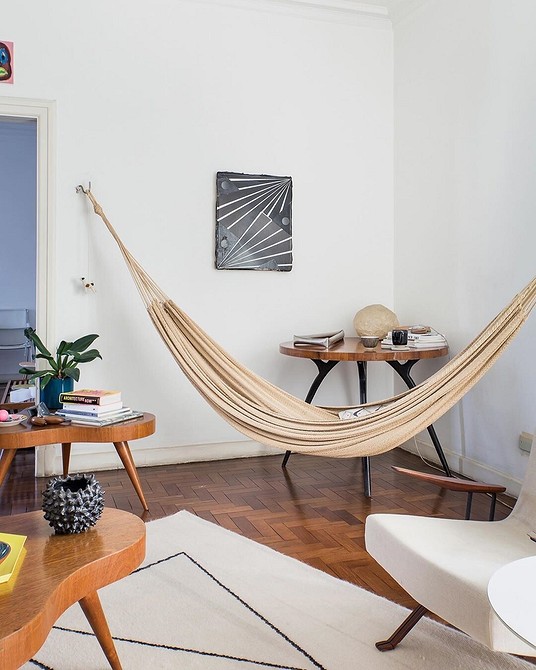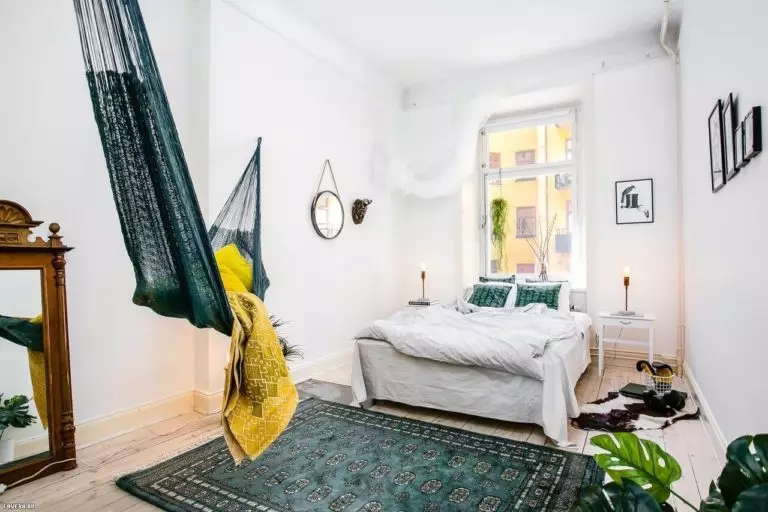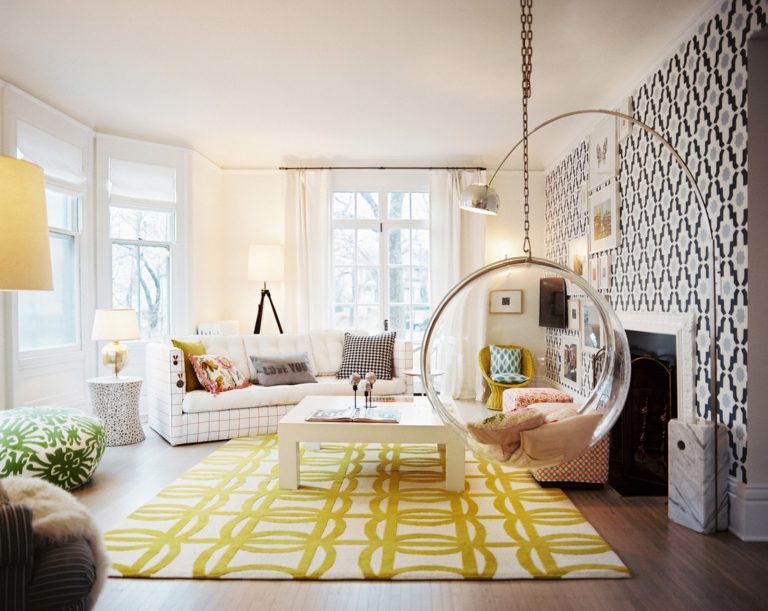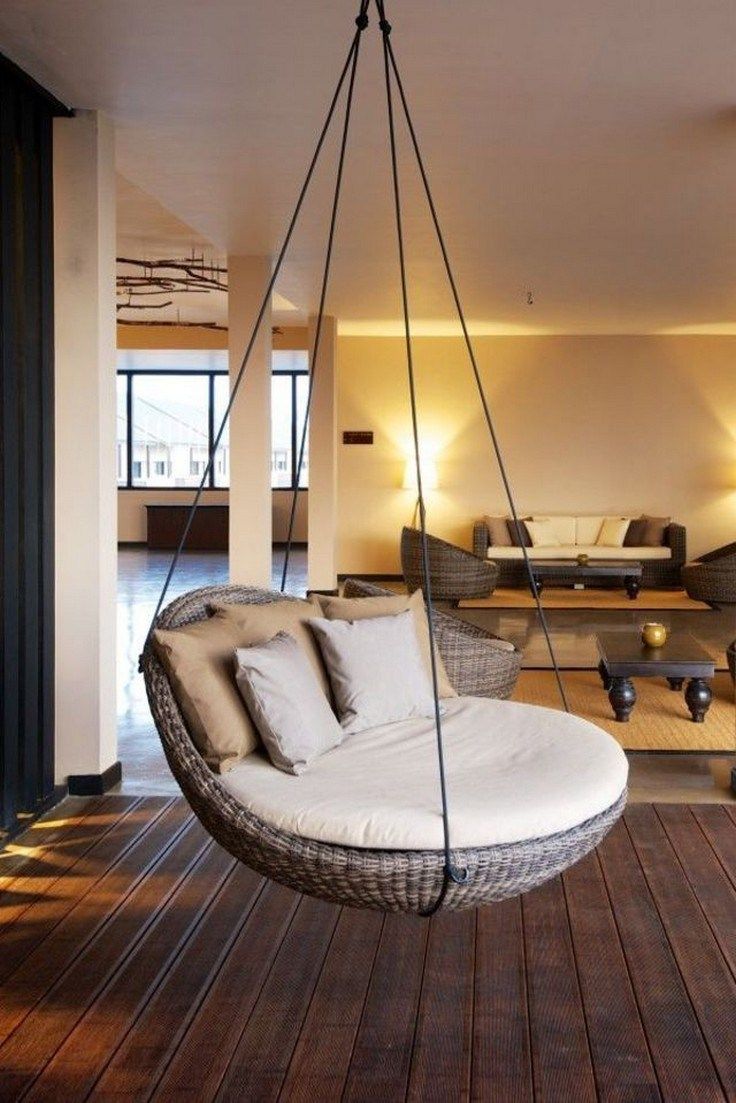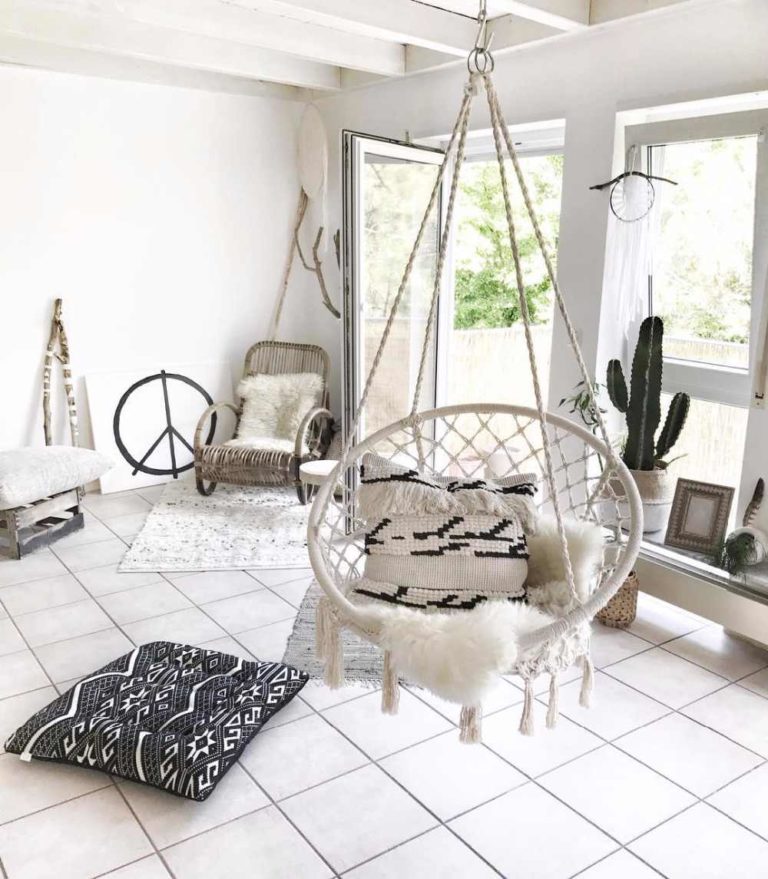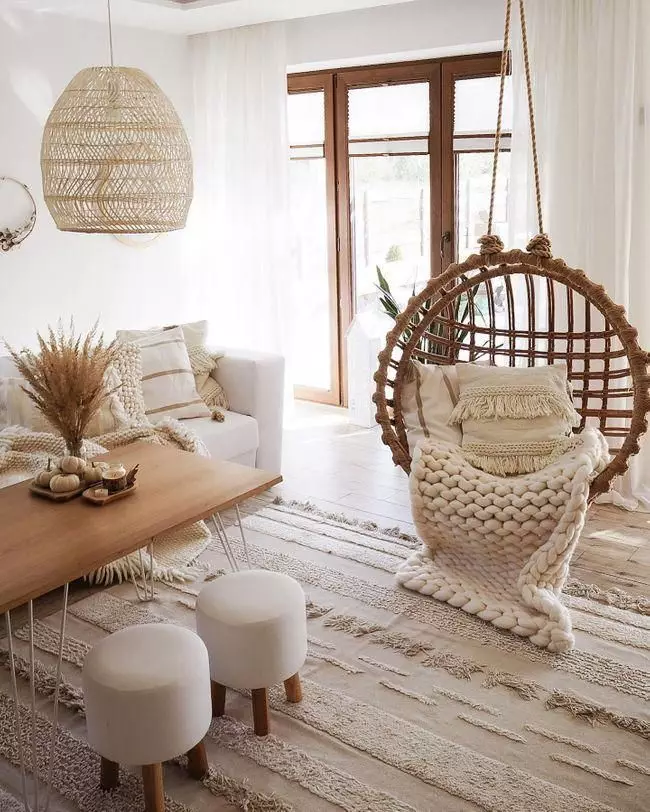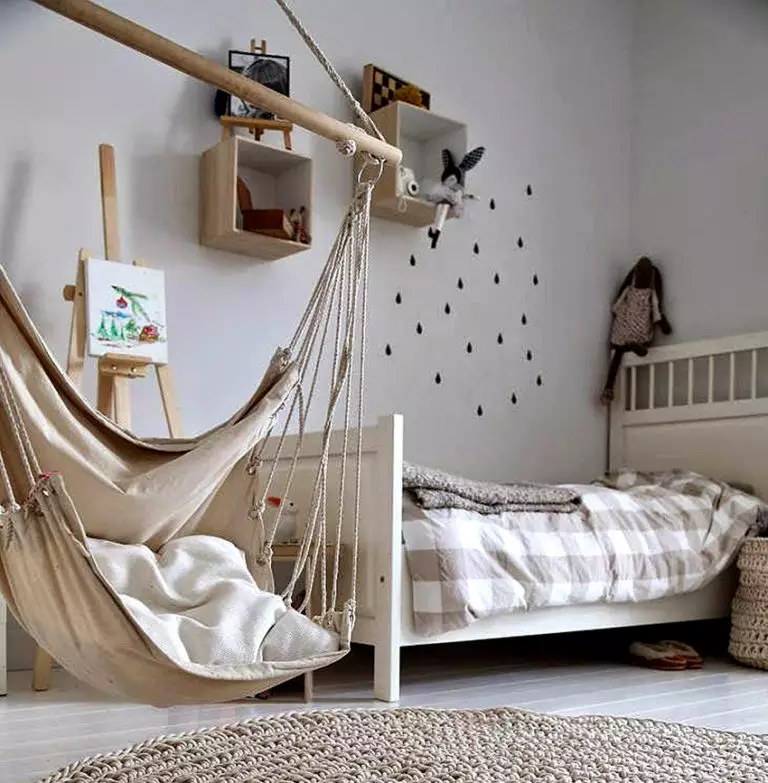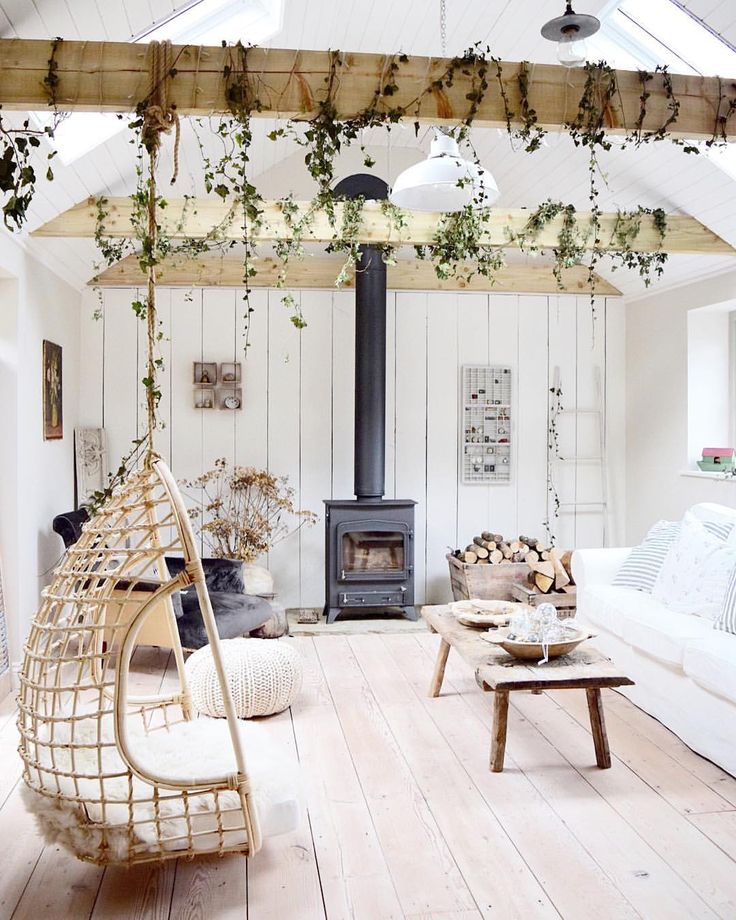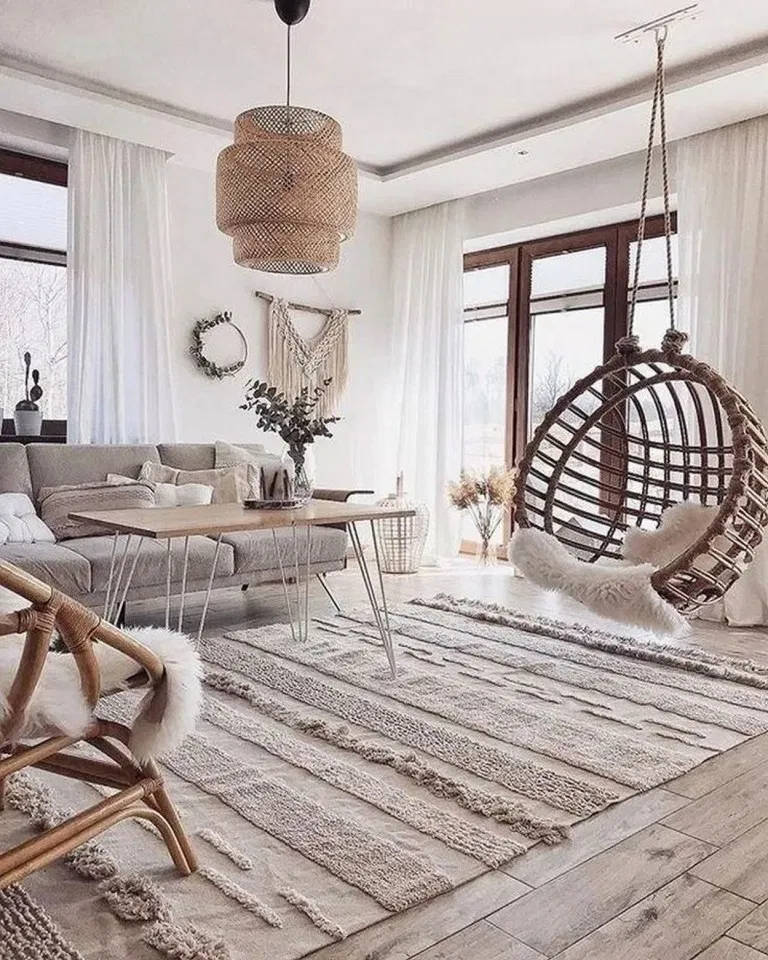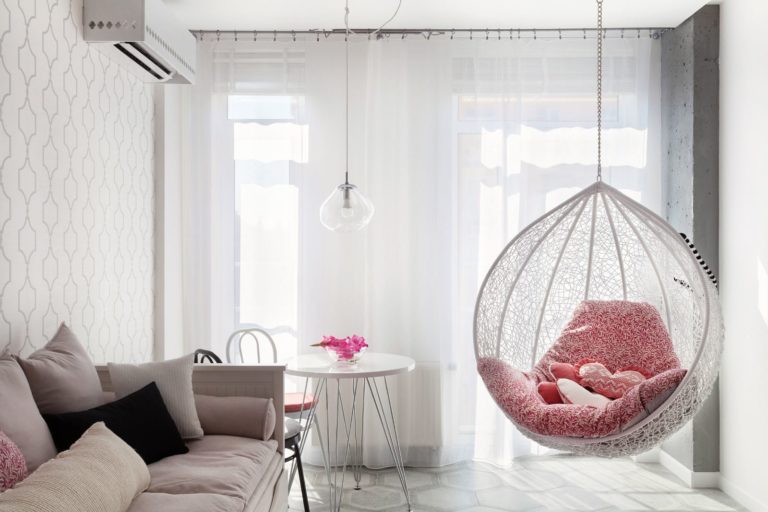Hammock in the living room: how to choose, assemble and use it as a decorative element
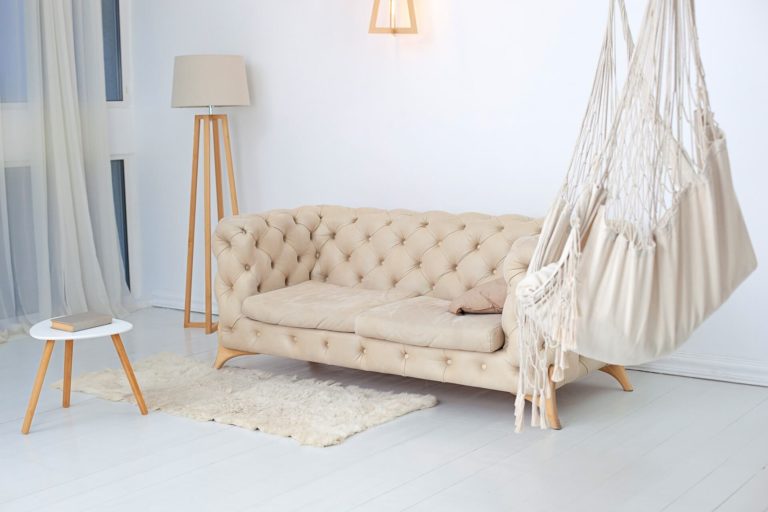
If you consider yourself a connoisseur of comfort but want to take it to the next level, then it’s time to install a hammock in your living room.
Even if hammocks are nothing more than hanging sails, the sense of relaxation they offer can hardly be overcome. Even sofas with lumbar cushions don’t have the charm of a simple hammock.
As comfortable as it is, the sofa does not rise above the floor, does it?
Once you decide to put a hammock in your living room, all you have to do is choose the right one and install it most safely. In this article, you’ll learn everything you need to know to feel more comfortable at home.
How to choose an indoor hammock
There are many models of hammocks: canvas or woven hammocks, unique hammocks for climbers – parachute silk hammocks, hammocks with or without wooden bars that retain the shape of the hammock, hammocks with support or hammock chairs.
Of these, hammocks with support or a chair that hangs from the ceiling are the most suitable for indoor installation.
Hammock with stand
A hammock stand gives you the ability to place it and move it easily anywhere in the house, but you have to keep in mind that it will take up a reasonably large area.
Hammocks with supports can be up to three meters long, and the width usually does not exceed one meter. Supports are solid from hardwood or iron.
Before buying a hammock for home, check the maximum supported weight. Usually, such a hammock is not recommended for two people or over 100 kg.
The supports can also be purchased separately, which is excellent if you want to use your hammock in the garden in the summer and bring it home in the winter, without having to drill holes in the walls or ceiling.
Hammock chair
If you want to enjoy the floating and swaying sensation without lying down, try a chair-style hammock. It takes up much less space in the living room, and you can place it in the corner of the room, even if you choose one with a stand.
A hammock chair without support should have a spacer, a wooden bar that holds the two ends of the canvas apart from each other. There are also hammock chairs with an iron structure and back. They are very similar to hanging chairs.
The hammock chair clings to the ceiling at a single attachment point. When choosing a location, keep a safe distance of one meter behind and in front of the hammock to turn or swing.
You can hang it on a sturdy rope or chain, considering the room (rope if the living room is decorated in a rustic, Scandinavian, minimalist, or traditional style, and chain if it has more industrial motives).
Classic hammock with two support points
You can also opt for a hammock with a classic handle for walls or support pillars, but you will face some limitations in this case.
If you have a small living room, it will be challenging to find enough space for a hammock hanging between the walls not to obstruct the passages. To avoid bumping into it, you can fasten it between two perpendicular walls or one end of the ceiling and one end of the wall, depending on your living room configuration. You will also have to drill holes in the walls, which is not always an option for an elegant living room.
How to decorate a living room with hammocks
A hammock is a handy decorative element. It will bring a touch of relaxation and a joyful mood to any living room, especially if you choose a rope hammock. When not in use, you can put decorative pillows and blankets on top of it.
In a modern living room, you can harmoniously integrate hammocks in beige cotton or other neutral colors. You can add a turquoise rope hammock in a Mediterranean-style room, and in boho or shabby chic living rooms, brightly colored hammocks are suitable.
Finally, it’s good to remember a few critical things to enjoy an unforgettable stay in your living room safely:
